As COVID-19 numbers grow, so does creative patient placement
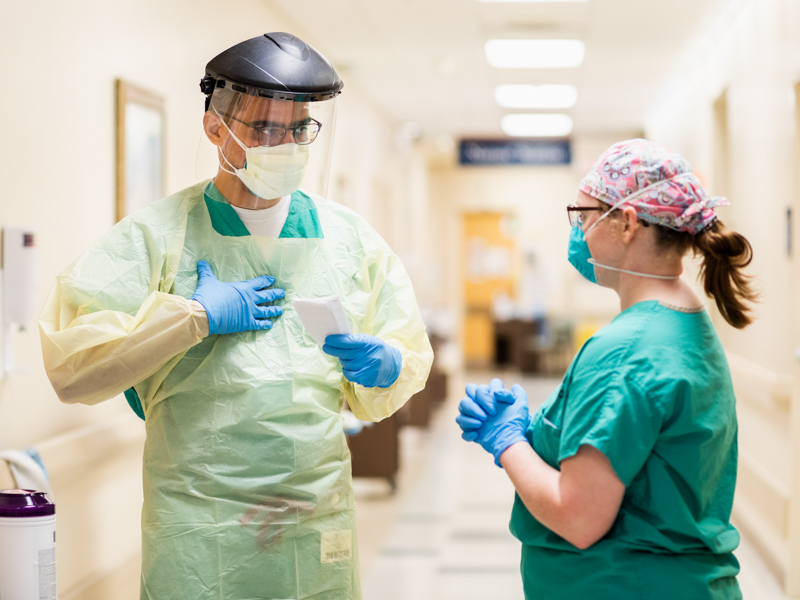
When the University of Mississippi Medical Center hits a new daily high on hospitalizations of confirmed and suspected COVID-19 patients, it’s a constant reminder of the complexities that go far beyond practicing medicine in a pandemic.
Hospital leaders are juggling how to dedicate space, resources and staffing to those patients simultaneously with meeting the needs of all who need care, no matter their disease or injury. It’s a balancing act, and not unusual for a hospital that typically operates at capacity.
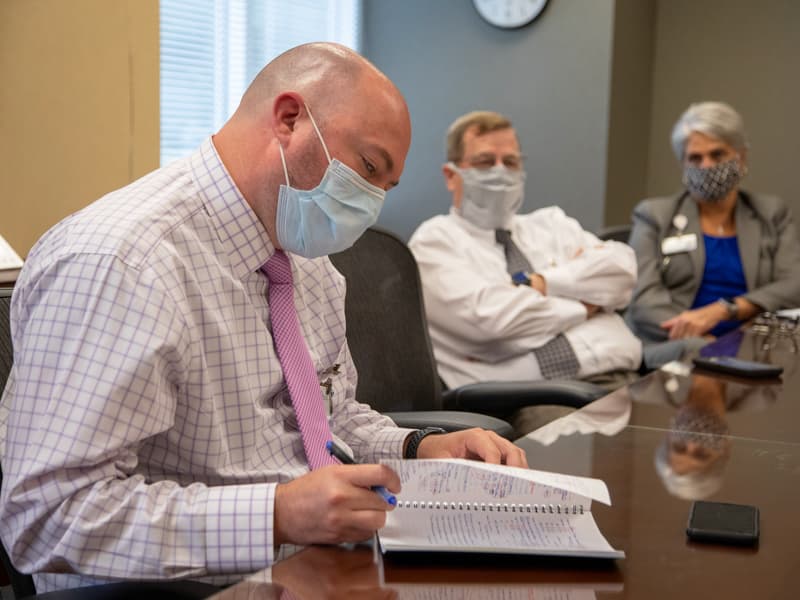
But what makes this different is how the highly contagious and sometimes deadly virus affects the placement of patients, both those with COVID-19 and those who don’t. All told, there are 697 licensed beds spread between the four hospitals on the Jackson campus, with another 142 at UMMC Grenada and 25 at UMMC Holmes County.
“We are having to use different tactics around COVID-19 because of the special considerations with that patient population,” said Jason Zimmerman, associate chief nursing officer for adult nursing services.
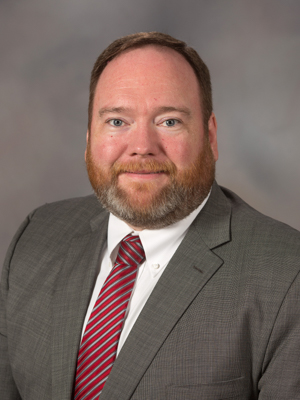
The challenge is “how to balance our COVID-19 patient demands with the non-COVID, everyday operational demands,” said Dr. Jonathan Wilson, UMMC’s chief administrative officer and COVID-19 response incident manager. “We’re the only Level I COVID-19 facility, but at the same time, we are Level I trauma, the state’s only transplant program, the state’s only children’s hospital. How do we balance that and manage capacity?
“We are running two different hospitals, COVID and non-COVID, at the same time, but in the same space,” he said. “And, folks at the bedside have been the heroes and done the yeoman’s role in getting great care to our patients. We’ve got to take care of them as well.”
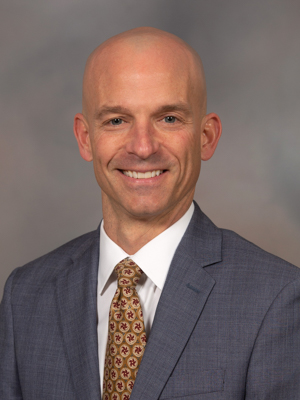
Hospital leadership has both short-range and longer-range plans for managing capacity across the organization. Early on, they designated the medical and cardiovascular intensive care units and two sections of the second floor in University Hospital for COVID-19 patient care. Each ICU has 20 beds; 2 North and 2 South together have 64 beds.
About 15 to 20 percent of COVID-19 patients will spend time in the ICU at some point in their stay, Jones said. The rest receive care for conditions such as pneumonia resulting from the virus, in addition to chronic conditions that may have been exacerbated.
“The MICU has stayed full, and the CVICU has fluctuated,” Jones said. In keeping with that fluctuation, he said, one side of the CVICU is dedicated to COVID-19 patients, and the other to patients who don’t have the virus.
“As we move into needing beds on the non-COVID-19 side, then we move the non-COVID patients there to another ICU,” Jones said. “We keep the staff segregated. Staff caring for COVID-19 patients do not simultaneously care for non-COVID patients.”
If there’s a large spike in COVID-19 patients, Jones said, the West section of University Hospital’s second floor, with 13 beds, would become a COVID-19 floor, and the neuroscience ICU would also house COVID patients. “But we have to balance that with where to put patients who don’t have the virus,” Zimmerman said.
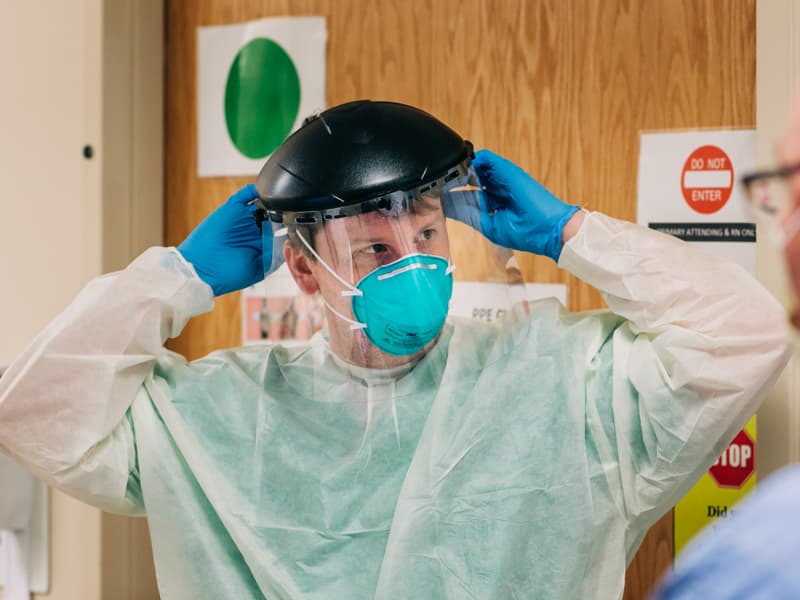
“Our colleagues from Children’s of Mississippi have been very helpful,” he said. “We’ve been able to send some of our younger adults who do not have the virus there to offset our capacity.”
Managing capacity takes “the efforts of a whole lot of people – nursing and provider leadership, OR, our many support services, and the efforts of those on the front line,” Zimmerman said.
“You can never predict how many people will walk into the ERs. You can’t fully plan for that,” he said of the COVID-19 patient load. “But, you plan for what you can. You have to have a plan to accommodate the next person who comes through the door, whether that’s a transfer from a critical access hospital, a patient from our clinics, or the patient walking in from the street.”
They think swiftly and creatively, coming up with temporary solutions such as placing some patients in the post-anesthesia care unit. In the children’s hospital, an area of the pediatric ICU has been converted to negative pressure rooms for COVID-19 patients.
“For years, we’ve put patients in (Wiser Hospital for Women and Infants) to augment the adult hospital capacity. We are stretching their capacity,” Zimmerman said. “Our labor and delivery unit has delivered multiple COVID mothers” all while facing capacity challenges unique to them as they care for the most complex patients in the state.
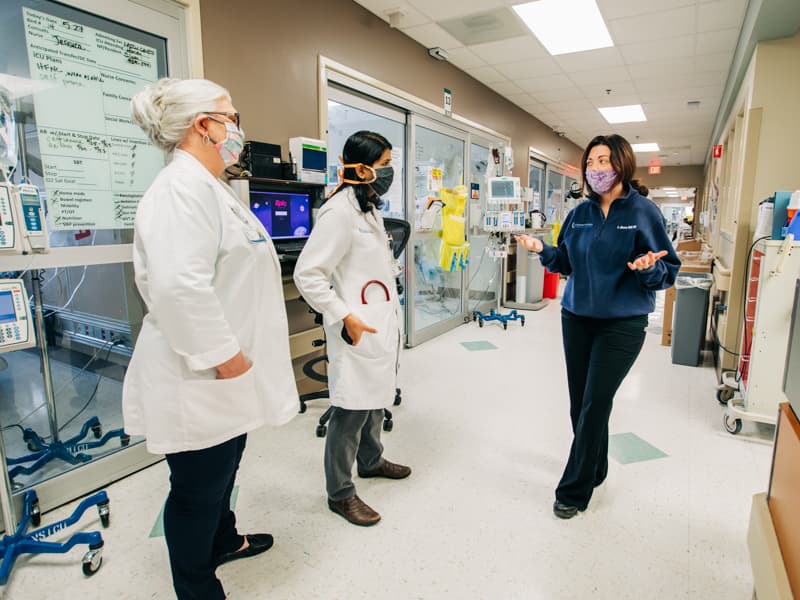
In the MICU, nurse manager Ashley Moore and her staff are making best use of their time and resources in handling patient capacity and containing spread of the virus. “We are grouping activities for our patients,” she said. “For example, the nurses and respiratory therapists are grouping medication administration, patient proning and patient repositioning.”
“We also are pulling some of the equipment right outside of the rooms,” she said. “Whoever is walking by a patient’s room can assess and immediately attack a problem. We don and doff PPE as teams. When you enter a room and finish with your patient, you can tap on the glass door, and someone walking by will help you doff your PPE. The staff does a really great job of containing the spread.”
“We have telemedicine capability in a lot of those rooms,” Jones said. “It’s mobile, and it allows for monitoring without entering and exiting the room.”
COVID-19 patients in an ICU room who need primarily basic support such as oxygen and hydration might stay just a few days. Patients on ventilators might be there several weeks, Moore said. Staffing is generally two patients to one nurse, or one-on-one care for those who are sickest.
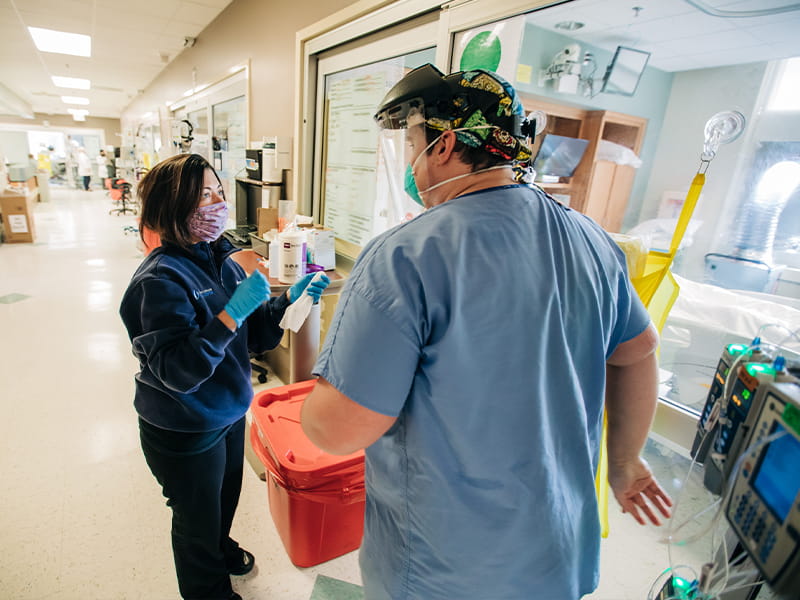
“Both on the physician side and the nursing side, we are cohorting the staff,” Jones said. “On a given shift or rotation, those are the only patients they care for. We think that’s helped a lot, and knock on wood, we haven’t had any episodes of patient to health care provider transmission.”
But, Moore said, the biggest MICU driver for quality, focused COVID-19 care is teamwork.
“We are blending in with each other. People are always helping people,” Moore said. “If someone has a suggestion, we’re going to try it if it meets our standards of care. It’s a cool thing to see our nurses in action.”
Moore and other managers don’t just keep tabs on patient numbers. They are charged with staffing, and caregiver burnout is a constant concern.
“I can see when stressors start escalating,” Moore said. “I will tell that person, hey, take a day off. Sometimes, people just need a mental break. You try to leave work at work, but sometimes, you cry your entire way home. That might be how you handle it.”
Five months into the pandemic, the Medical Center can be proud of its response, Wilson said.
“We’ve used the Center for Telehealth for virus screening, and our Mississippi Center for Emergency Services has set up (specimen) collection sites. We’ve been able to duplicate that all over the state,” Wilson said. “We’ve done a good job on our testing abilities and capacity, and have augmented the Department of Health in performing large volumes of testing. That’s not a traditional role for our labs.”
Another huge accomplishment, Wilson said, is the Medical Center’s national role in clinical trials for drugs that could help fight the virus. “A lot of times when we have clinical trials, people don’t know about them,” he said. “These are among the top clinical trials in the country.”
The virus, Wilson said, “will be with us a long time. We have to be concerned about sustainability and taking care of folks who are doing the great bedside work.
“We will know a lot (soon) about what the Memorial Day weekend did for us,” Wilson said, referring to people statewide who may have transmitted the virus because they chose not to socially distance, wear masks or take other recommended precautions.
“We are concerned, to a healthy degree, that it may get worse,” Jones said. “We are looking at an uptick of cases this fall or winter, and planning what it will look like in terms of our services.
“We are working the best we can, trying to safely take care of all of our patients.”


